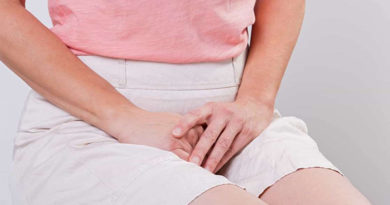Women and Rosacea – What You Need to Know
Rosacea is a common skin condition characterised by flushing and red patches spread across the face. Throughout the world, hundreds of millions of individuals live with the disorder, although women are three times as likely to be diagnosed as are their male counterparts. Even though the symptoms of rosacea are often more pronounced among men, the effects of the skin condition can be more debilitating among female populations for a variety of reasons.

If you are a woman with rosacea, or believe you may have the warning signs of the skin condition, it is helpful to know why women experience rosacea differently than men, how to get the right diagnosis, and what to do when it comes to treatment.
The Difference Between Men and Women with Rosacea
According to a leading resource on rosacea, the skin condition is common among both men and women, although a higher prevalence is seen among adult women. The disorder of the skin has several warning signs, including but not limited to:
- Facial redness
- Bumps and pimples
- Rough skin
- Skin thickening, especially around the nose
- Eye irritation
- Visible blood vessels on the face
While the warning signs of rosacea are similar among men and women alike, there are significant differences when it comes to experiences with the disorder. Men have more severe symptoms more often, including skin thickening and eye irritation, but their flare-ups may be less frequent over time. Women, on the other hand, experience flare-ups of flushing, bumps, and pimples more often than men.
The effects of rosacea can also be more prevalent among women who are menopausal, or during mid-cycle. Although there is hard and fast evidence that hormonal imbalances linked to menopause or menstruation cause rosacea, some research suggests that these changes in the body may create more frequent, noticeable symptoms for women during these times.
Misdiagnosis is Common
Women are three times as likely to be diagnosed with rosacea compared to men of the same age group, but that doesn’t mean misdiagnosis does not take place. According to a law firm working with medical negligence claims, missing the mark on a correct diagnosis of rosacea is common because of the wide-ranging symptoms women present with. There are a handful of conditions that mimic rosacea warning signs, including psoriasis, dermatitis, and adult acne. In some rare cases, lupus may also be confused for rosacea. Each of these disorders impacts the skin in different ways, despite the fact the symptoms are so similar. These differences, however, call for varied treatment plans, making a correct diagnosis imperative.
Women may suffer more when a rosacea misdiagnosis takes place because of the social and personal effects the condition has. A recent survey states that nearly 90% of individuals with rosacea experience a reduced level of confidence and self-esteem in their everyday lives, and more than half say the condition has caused them to miss work or other important social engagements. Women, who have a higher level of pressure to meet beauty standards, regardless of age or race, may experience these negative effects of rosacea far more than men in similar positions.
Treatment and Support Available
Rosacea can be a devastating condition, especially when misdiagnosed initially. However, women and men alike have treatment options available once a correct diagnosis is provided. In many cases, rosacea is treated through a combination of medications and therapies. When medication is prescribed, patients may be encouraged to use topical gels that work to constrict the blood vessels. This helps minimise redness associated with the condition. Similarly, oral antibiotics may be used to help reduce inflammation caused by flare-ups. Some patients may also be prescribed oral medications to clear up acne-like lesions on the face.
In addition to medication treatments, doctors may also advise women with rosacea to focus on certain therapies to help reduce the potential for flare-ups in the future. The most common recommendation is to avoid triggers of the condition, which can range from exposure to sunlight and hot or cold temperatures to stress and intense exercise. If avoiding certain triggers does not help to reduce flare-ups of rosacea, other therapies including a change in diet or reduction in alcohol or nicotine intake can be beneficial in both the short- and long-run.
Although there is no complete cure for rosacea, women with the skin condition have some solace in the fact that there are ample treatment options available. It starts with getting the right diagnosis, followed closely by understanding the triggers that cause flare-ups. Once these issues are identified, working with a doctor who understands the condition can lead toward a successful course of treatment for women with rosacea.



